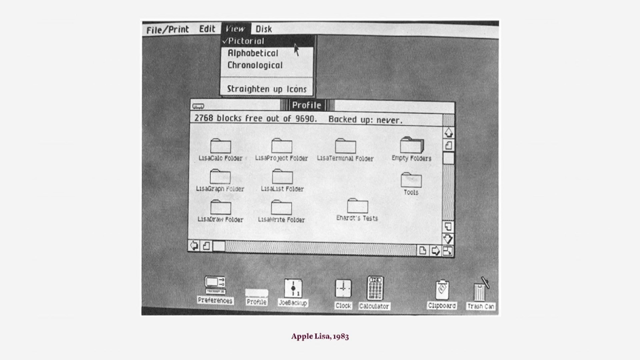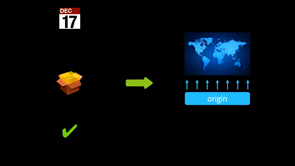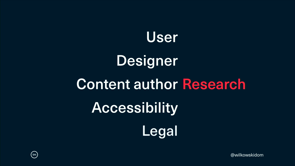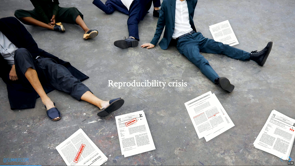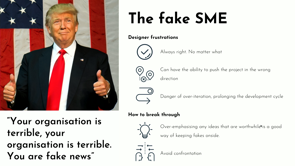Designing Against Domestic Violence

(upbeat techno music) - Thank you, thanks for being here.
I'm really excited to be here.
I never thought I'd get to come all the way from Chicago to Australia to talk about this stuff that I care a lot about, so thanks, John, for being a kindred spirit and caring about this stuff, and helping me bring this content to a whole new country. So, like John said, my name is Eva.
I'm a lead designer at a software consultancy called 8th Light, which operates out of America, also the UK. My pronouns are she and her, and this is gonna be about designing against domestic violence, but quickly before I get started, I wanted to just get a little read for the room because there are some sort of differences between countries, so I just wanna know how many of you, show of hands, work out of Australia.
Almost everyone.
Any other Americans here who work, who like work, are based out of America? A couple people, okay.
New Zealand? Canada? And elsewhere that I didn't mention? Okay great, so most people are from Australia, so this has very Australia-specific content, but if you're not working in Australia, there should be a lot of useful content for you anyway. So I wanted to also quickly explain why I'm qualified to talk about this stuff, because I think most people, you're at a design conference, you're learning from other designers.
It's pretty obvious why they're qualified, but domestic violence is a really touchy topic, and it has to be handed with a lot of sensitivity, so I wanted to quickly explain why I'm able to do that. So in 2013, I got certified as a rape crisis counsellor through a non-profit in Chicago, which basically meant that I was qualified to go to emergency rooms and help people who were there seeking services after a sexual assault. That gave me a lot of knowledge about sexual assault, also domestic violence 'cause we were trained on how to recognise it and how help people who might be going through it.
And that led me to, in my last career, which was at a nonprofit called City Year that basically deploys young people into schools to work with kids who are probably gonna drop out if they don't get some intervention.
I was asked to lead a training on domestic violence for them, so I trained hundreds of different people who are working with young students on what domestic violence is, how to recognise it, and how to support survivors. So that's a little bit about the background of why I'm here talking about this.
I moved into tech about three years ago, kind of started putting the pieces together, collecting examples of ways that technology enables domestic violence and thinking like we need to do something about this. So I put together this talk.
This talk is the first step of what I'm planning on being a much larger project to increase safety for everyone through centering the safety of survivors of domestic violence.
So there have been some really great talks here, and the benefit of going towards the end is I get to reference them, so I'm gonna do that a bunch. I was really inspired by Jason's talk yesterday, especially the pictures of his dogs, and (chuckles) I had debated should I do that? This is a really serious topic, like I wanna be really serious, but after I saw that I was like, yes, the answer is yes, because I don't spend all of my free time immersed in the worst of humanity and what humans do to each other, just most of my time. When I'm not doing that I'm with these guys. Also I learned today on Twitter that it's National Pet Day, so I would love to talk to people about this talk about design afterwards, but I would also love to see pictures of your pets. Okay, gonna do a quick note before we begin. Based on statistics, there are very much likely survivors in this room, so if at any time you're feeling uncomfortable, overwhelmed by the explicit content in this presentation, please leave the room.
You won't be judged.
I won't be upset.
So I'm gonna kick things off right away with a story. This is the first of a few stories that I'm gonna be telling, and these are all true but anonymized stories. So this is Erica and Robert.
They've been dating for about a year, and from the outside, everything looks great, as things usually do, but on the inside, things are not actually super good.
Robert is psychologically abusive.
He needs to know where Erica is at all times. He's constantly accusing her of cheating on him, of keeping secrets.
And this has been pretty bad for a few months, now that they've been dating. During one argument, he ends up ripping the phone out of her hand, accusing her of texting other guys and throwing it against the wall.
So Erica had felt like Rob had some issues, but was ultimately a good guy who could kind of work through some of this stuff, but after this happens, she recognises that it's only getting worse. She knows that once there's violence, it's unlikely to stop. It's almost never a one-time occurrence.
So, she breaks up with him, but after the breakup, suddenly he is everywhere.
She's being stalked, and she can't figure out how he's doing it. She's doing research online trying to figure out what setting she has or what it is that's allowing him to find her, so she goes through all these different things. She turns off device syncing, after reading that he might have synced his devices with hers, while they were in a room together. She turns off all the metadata around her photos, because that can also have location information in it, and he's still finding her.
So finally she calls a family violence hotline, who takes her through some other things that she hadn't been able to uncover in her research, one of which is her car's GPS system.
And she hadn't considered this, but Rob had borrowed her car, and it was definitely possible that he could have done something with the settings while he had it. It turns out that that was the thing that he was using, so it takes her a while to figure out how to turn off this setting and get it so that other people can't see her location, but eventually she does, and that's when the stalking finally stops. So 81% is the percent of abuse victims who are stalked by their abuser, and these all have sources at the bottom, lots of them from different parts of the Australia government.
This comes out to one in six women total in Australia who will be stalked at some point in their lives.
So I'm going to be breaking down these different elements of domestic violence into some more tangible pieces that we can start to think about how do we design against these things. And the first one is stalking.
So when we work on a product that has to do with location, there are some things that we an consider to centre the safety of people who might be being stalked. So first of all, GPSes just always need to be running in the foreground.
It needs to be really, really obvious that they're in use, and this is already happening in a lot of areas, but things like cars, this is a new thing.
Most cars today are equipped with this GPS stuff that other people can access, and a lot of people have no idea that this is going on. It could look something very simple.
I just made a quick little mock-up of what this might look like.
Geolocation is on.
Your location might be visible to other users. You can dismiss it, or you can go right to the setting, so in terms of information architecture, it's very easy to find.
This is already something that's in a lot of car console UIs.
There's lots of things that you agree to, like I'm not gonna text, I'm not gonna drive distracted, and it's kind of annoying, but the car designers or manufacturers have decided that this is a worthwhile trade-off to annoy the users a little bit to increase the safety of everyone a lot. So there's already a model for this, and I think this should be another setting. And then they have to be simple to turn off. It shouldn't take forever to find the settings, so information architecture should always prioritise the findability of any settings that involve user safety. And this also goes for location sharing, which has some of the same issues.
So you share your location with someone, and then if you haven't turned it off explicitly, it should alert you that this is still on, like an hour later, a day later, whatever, hey you're still sharing your location with this person. Do you wanna keep doing that or not, because maybe someone that you trusted a week ago to know your location, you don't trust them anymore.
Okay, so I'm gonna take a step back and talk quickly about the goals of today's presentation, which is not to do general education around domestic violence but it's to talk about how we as designers are part of the solution. So that said, this space is validating the reality of domestic violence, and I'm assuming that people who are still here believe that this is a real thing, and it's worth solving.
A quick note on the language that I'm gonna use. There are both male and female victims, and it's really, really important to acknowledge the male victims because they face even worse stigma around coming forward, and there's even more societal expectations that they're not gonna experience it, which makes it really hard, but when it comes to the perpetrators of who is doing domestic violence, it's 95% men. So this is not a gender-neutral problem.
It's overwhelmingly a problem of male violence, so I'm not gonna be using gender-neutral language or gender-neutral stories.
And I recognise that this could be really uncomfortable for some of the men in the room, so if you're feeling uncomfortable, do your best to sit what that discomfort and to keep your mind open to the content and to remember that you're being invited to be a part of the solution.
I'm mostly gonna use the term survivor more than I use the term victim, because it centres the person going through the experience and speaks to the fact that they're surviving a really dangerous situation.
So Erika Hall at Mule Design says, "The most important topic in design "is how the systems we create "are mediating interactions among humans." And that's really what this is presentation is all about. How can we design our systems to encourage honest, positive, and safe interactions, and discourage ones that are dishonest, hateful, or dangerous.
So there are no silver bullet here.
This is really, really hard, and really complicated. Every new product is really unique, which means that there are unique ways that it could be used to harm someone, but I'm gonna be giving you a bunch of different stories that are gonna help you understand some of the ways that this could work, and then hopefully you'll be able to apply those out to your own unique product situations at your jobs. So that's gonna be the mindset aspect of it, telling these stories to help you understand how this works, how this intersection of technology and domestic violence happens.
And then, I'm gonna share a quick framework that I've developed to help us in this responsibility we have of designing for safety.
So some other people have talked about this. Josh did a really good talk on Wednesday where he mentioned this a lot, and I wanna acknowledge that none of us mean to design something that's gonna harm.
We don't want this to happen but that doesn't really give us an out, so I really like this term impact over intent. It means that the impact of our actions are more important than the intent of our actions, because if I didn't mean for my product to harm someone, it doesn't really matter to the person experiencing the harm that my intent was good.
What matters is that they're being stalked or going through something really difficult, but I do wanna recognise that none of us are ever setting out to do harm.
It's more that we just aren't thinking through the consequence of our actions, but there are some exceptions to this where people, there's just no way that they think that this could be used for anything other than harm. This is stalker-ware or spouser-ware.
This is in a completely different realm from what I'm talking about today.
This is where people are just kind of evil. We're not evil.
We're just people who are trying to make a good design and need to think through things a little more thoughtfully. So, we're gonna learn how to do that.
A couple quick more things before the stories. I just want to define domestic violence so everyone's on the same page.
It is the physical, sexual, emotional, psychological, and financial abuse at the hands of a domestic relation, so this could be a roommate, a family member, or an intimate partner.
When I use this term, I'm referring to the intimate partner aspect of it, which is how most people use it.
Here in Australia, the average number of domestic violence incidents that get reported every year is 264,000. That comes out to the police dealing with a matter of domestic violence every two minutes. However, we know that this is an under-reported issue. So the stats around this vary, but it's between 14 and 36% of victims here in Australia who end up reporting the incident to the police. So we know that this is really under-reported, and that every two minutes doesn't really capture the scope of this problem.
One in three women in Australia will experience sexual and/or physical violence at the hands of an intimate partner.
And I wanna draw attention to the fact that indigenous women in Australia are 32 times more likely to be hospitalised due to a domestic violence incident.
And this is similar to how it is in America and Canada as well.
It's a lot, lot worse.
It's really important to acknowledge that.
For men, the number is one in 16 who will experience sexual or physical violence at the hands of an intimate partner, and this is really debated, this number.
It's probably a lot more frequent than this number captures due to even further under-reporting by men because of how I mentioned, there's even more shame and stigma.
It's extremely likely that this number doesn't represent the reality.
In America, it's one in six men, and it's probably closer to that here, but it's really tough to get at.
So just to be clear, domestic violence is not an edge case in our society.
It's really secret.
It's really hidden.
It's wrapped in so much shame and stigma that we don't hear about it, and it's not front and centre, but I'm arguing that because of these statistics that I just shared, it's something that we need to have front and centre when we're designing pretty much anything.
If your product base of users includes adult men or women, then you're gonna have people going through domestic violence using your product so it's something you need to consider.
All right, move on to the second story.
This is about Isaac and Helen.
After they get married, they merge their finances, and they open up a joint bank account.
So despite the fact that they went to the bank together to set it up, joint bank accounts typically, actually are just kind of built for one person, and they have a second person tacked on who has less privileges and rights because there's still just a default user whose information is gonna get used.
So this means that whenever Helen logs into this bank app from a new computer, a new network, or something else happens that prompts security questions to come up, they're always about Isaac.
So she's having to ask him like, hey, which of these addresses goes with the city that you lived in as a kid or whatever.
And this gives him a lot more power over their finances. And as time goes on, he's able to exploit that power to take full control over their money.
He ends up cutting off Helen's access to the account, and just gives her money as he sees fit.
So this makes her really, really dependent on him for everything, and it also makes it pretty much impossible for her to leave.
90% is the percentage of abusive relationships that have an element of financial abuse, and also one in 16 women experiences that in some point in their lives, some type of financial abuse.
So when we're thinking about designing against financial abuse, a few things to consider. Joint bank accounts should be fully joint, in the digital sense.
They should have separate logins.
It shouldn't be that one person can change the password and just not tell the other person, and now they just don't have access.
That's not a true joint account.
This is especially important when we live in societies that are going to default male power over female power. Financial software should also flag suspicious actions that indicate some type of financial abuse. These patterns are known.
They're established, and they should be included with financial software because then professionals could be alerted that this is happening, and then they could offer some type of meaningful intervention.
This is a very common theme in terms of elder financial abuse where people are exploiting an elderly parent who maybe doesn't have full cognition, so there's already a model for this that exists and works really well in most countries, and it could easily be applied to a different form of financial abuse.
And remember that 90% of people who are experiencing domestic violence are experiencing some type of financial abuse, so this is a really crucial point where there could be intervention.
As I was researching this, I was really, really excited to learn about the Commonwealth Bank of Australia and their Family Violence Customer Support Programme. It's really cool.
Basically they started it in 2017 to help their customers. It's not quite as proactive as the suggestions I just mentioned, but it's still really good, so what they did is they provided a phone number that people can call who are experiencing financial abuse, and they can receive support.
So the outcomes were pretty awesome, 87,000 calls in the first month.
The first 10 months of the programme they assisted 6,000 people.
They found that 95% of the people who ended up getting assistance were women, just pretty consistent with what we know about domestic violence.
And then after that 10 months, which was in August, they expanded the programme.
It was a one-year pilot, but after 10 months, they decided that they were gonna continue this because it was serving a real customer need, and they also expanded it to include their staff on how to identify at-risk customers, which is really, really cool.
And then also since I've here, I've been able to learn about someone who had a really positive experience with Westpac Bank, which I know we had a speaker from the other day, and who had a really good experience calling just their general hotline and getting really good support right away. So that's really exciting, and I'm really hopeful that all of the banks in Australia are gonna start following this model.
And my personal analysis, having researched financial abuse in Australia, America, and Canada is that there is similar institutional support here in Australia, which is really exciting, but there are still some problems. This is another thing that a new friend here at the conference pointed me in this direction, so I'm sure a lot of you are already familiar with this, but this was the government has a budget to support survivors and victims of family violence and domestic violence, and one of their things that they were gonna do was provide couples counselling.
This is a really, really bad idea in a couple of different ways.
First of all, it puts the survivor in a really dangerous situation to have to be physically present with the abuser, and it's also kind of implies that it's a shared onus of why this problem is happening, and it's not just people, mostly men, choosing to use violence.
And this is, this is kind of what Donna was talking about this morning where she said that we have to design with people, not for them.
I think if there had been a designer in this room who had done just a days worth of user research, they would have realised that is a really terrible idea. So I do wanna give a lot of props to the banks in Australia, and there is more institutional support here, but there's still definitely a lot of work to do. All right, I'm gonna move on to the next story. Lisa is an editor.
She works in San Francisco.
Her husband is a software developer, and he is super into all of the Internet of Things smart home devices. So he's got an Amazon Echo that acts as his hub for all of them.
He's got smart locks, a smart doorbell, the Nest thermostat.
He's got pretty much everything.
It can all be controlled through an app.
So, Ben's always been really jealous and controlling, and it's gotten worse the longer they've been together, as it usually does.
And now with all these devices in their home, he has this newfound way to monitor and harass his wife when he's not even there.
So Lisa's alone at the house one day, and suddenly the lights go off.
So she pulls up her app and turns them back on, and then they go off again, and this keeps happening.
She's getting really freaked out, so she's like, all right, I'm just gonna get out of the house for a minute and take a walk. When she comes back, she puts in the code for the door pad, and it doesn't work.
And she puts it in again, and it doesn't work, and she calls her husband, and she's like, why isn't the code working? And he gives her what he says is the code that it's always been, but she knows it's a new code. And he berates her, and it's like, "Why can't you just figure this stuff out? "It's really not that hard.
"You just need to remember, Lisa." So the next day, Lisa's working in the kitchen, and she realises that she's really hot.
So she walks over to the Nest and sees that it's at 80 degrees, which I don't know what that is in Celsius, 40, 50, I don't know? It's really, really hot. (audience members chuckle)
(chuckles) Yeah, so whatever makes you sweat indoors when you're really not doing anything.
That's how hot it is in her house, all of a sudden. She texts Ben, and is like did you maybe accidentally turn up the Nest? And he's like, "Of course not, why would I do that? "Why can't you figure any of this stuff out? "It is really not that hard." And later that day, the doorbell starts ringing over and over again. She keeps trying to catch whoever it is in the app through the camera, but she doesn't see anyone there.
Obviously at this point, she's starting to suspect that Ben is actually behind all of these things. And she debates calling him and asking him if he's doing this, but she knows it's not really gonna get her anywhere. He's just gonna berate her.
She's gonna kind of wind up back where she was, so she doesn't.
And then later, she calls her sister and is talking about all the weird stuff that has been happening, and she says out loud that she thinks Ben is behind it all. And a minute later, she gets a call from him, and he says, "Hey, you've been talking to your sister?" And she's like, how did you know that? How could you have known that? And he's like, "I didn't know, I was just guessing. "Why are you so paranoid?" But of course, he did know.
He knew because of Alexa's drop-in feature, which he's enabled just for this purpose.
So this is a really great feature for a happy use case, which is, for example, you're at home.
Your home has died or maybe it's in a different room, and your partner wants to call you.
You're not picking up your phone.
He can call you through the drop-in feature. This is really nice, but there's some problems with it, mainly that there's no element of consent to pick up the call.
So when you get a phone call, you see the name or the number and you can hit Accept or you can hit Decline. You have consent over speaking to that person, but the drop-in feature doesn't have that.
It tells you the call is starting, and then the call starts, and if you're not in the room when that alert comes on, or the volume is turned down, the person can just call in and then listen. So that's what he's been doing.
Of course, he was behind all the other weird things going on as well.
He was doing what a lot of abusers do, which is make it seem like the victim can't trust her own experience, and to use an ableist term, like she's going crazy. This is called gaslighting, and it is a form of psychological abuse.
And with all these smart home devices, he has a new way to do this.
So 89% is the percentage of domestic violence support professionals in America who had some type of misuse of technology in the past year.
This is still really, really new, so there aren't really hard statistics on this, but we know from people working in shelters and who do this support work with survivors that this is a really big problem, and it's growing. And the smart home device market is also growing really fast, so this is something that we definitely need to get ahead of.
There are a few things that we can think about, similar to with the joint bank accounts.
We need to think about who gets to control what, and if there are homes with multiple adults, there should be safeguards in place to ensure that people in the home are getting equal access to it, and it's not just sitting with one person.
So this is an example of something really simple, but if you update the code for your smart lock, it sends you, or excuse me, it sends the other people associated with the account an update, which it just says on the bottom there.
This isn't foolproof by any means.
They could just make it so that the person isn't even on the account at all, but this is at least something.
It would help a little bit.
Also, users always need to consent to things, especially like an incoming call, but really anything. People should consent to everything, and if there's any chance that it could be unsafe or unwanted, the default should be that they're not consenting until they choose to turn it on. Also, these devices should have UIs that make it clear what's happening and who made it happen.
So at the bottom here, I've just put in a little Jane Miller at 12:09 turned the heat up to 68.
This would help a lot with people who are being gaslit, and being told that something's not happening when it actually is.
And then there should also be a history log. This would be really important to, once again, make it so that people who are being victimised can have some proof of what's actually happening, and it would also be a useful, legal paper trail if they were a different, if there were legal proceedings in the future. So this seems really mundane, but it's really important. A Nest does not currently reveal this information to its users, but there's no way that they're not collecting it for themselves. So (sighs), they should just reveal it to the users. All right, moving on.
Sandra's husband, Jake, has been violent for many years, but she's really sure that now that she's pregnant, it's gonna stop, but tragically, that is not what happens.
Domestic violence actually, usually gets worse when a woman is pregnant, not better, and that's because for an abuser, everything is about power and control.
And when you're pregnant, there's a lot of things that are suddenly out of your control, body changing, people giving you lots more attention, and this is really hard for an abuser to deal with. So at four months pregnant, they get into an argument, and it ended up with Jake throwing Lisa, or Sandra down to the floor.
So the next day, she's recovering from this assault, and she's going through all of her different apps that she uses to track everything related to her health and her pregnancy.
She's trying to find a way to record the fact that she was assaulted and learn anything she can about the impact on her growing baby.
So she's looking through one app where she puts in like everything she's eaten, if she has a glass of wine, all those types of things, and there's nothing for an injury.
And it's the same with her general health app where she records food and exercise.
She can record kind of everything except for an injury. One in 23 is the number of pregnant women in Australia who experience physical domestic violence.
And I couldn't find a statistic around this for Australia, but I did want to share that in America, the number one cause of death of pregnant women is domestic homicide.
So this is a really big deal, and that probably has to do with the prevalence of guns that is in America and the lack of laws against abusers having them. But regardless, it's also a problem here.
Like I said, pregnancy does not mean that abuse comes to an end.
It actually, usually gets worse.
So when we're thinking about designing for pregnancy and health, it's more about intervention and offering support than it is about preventing some type of action from happening.
Any health, fitness, or pregnancy-related product should be planning for the reality of violence in women's lives.
It's a health factor, and it should be recognised, and then some type of support should be given. So it could look something as simple as this, like you're recording that there was an injury. This doesn't necessarily have to just be a domestic violence thing, like people get injured all the time.
There's lots of reasons that you might wanna record this that don't have anything to do with an abusive relationship, but if you did put in a word that indicates some type of abuse, it could show you a little message saying like this isn't your fault.
This isn't normal.
This seems like domestic violence.
It's important to us that you're safe.
Can we give you some resources? And then they can consent to yes, I would like that, or no, that isn't relevant to me, or I don't want that. All right, so this last story is, sorry, I thought I had some pictures of my dogs here as an emotional palate cleanser, (people chuckle) after the pregnancy stuff 'cause that's really tough, so maybe they'll come up later.
We'll see.
Okay, they'll be a little surprise if they do. So this last story is not a real story of domestic violence, but I thought it might be useful to share.
The first time that I was working on something, making a design and started thinking like maybe this could be better with an eye for safety, so folks from the Wednesday session, the Black Mirror Brainstorm, will recognise this, but I was designing an app that would sort of be an interface between people living in a high-rise apartment building and the building manager, so it had to do with things like let people manage their list of registered guests, let them report that there was a maintenance issue that they needed to fix, stuff like that.
So I was thinking about all the experience that I shared in the beginning about learning about domestic violence and thinking about how abusers are usually really, really charming. They're usually really good at things like talking their way past the front desk.
I remember a story of a guy who posed as a food delivery person and said, "Oh, I need to take it to this person's apartment. "They said they were sick, "but they didn't give me the apartment number." And they got the number, and they were able to get up to the person's apartment, even though she had just left him, and it was a really dangerous situation.
So I was thinking about all these things and thinking that the idea of just having a registered guest list that someone dangerous wouldn't be on wasn't quite enough.
So I pitched this idea of an anti-guest.
So this would be someone who you could make it known to the front desk that not only is this person not allowed into the building, but they're gonna have a really good reason why they should be let in.
They're gonna be very charming, and try to get in, and not only can you not let them in, but you need to let me know that they tried, and possibly even law enforcement, depending on if there's a restraining order. 25 to 31% is the percentage of murders in Australia involving a current or ex intimate partner, so this is a quarter or more of all the murders in this country.
And this is another statistic that I wasn't able to find for Australia, but in America, there's a statistic that a woman is 70 times more likely to get murdered the first few weeks after she leaves an abusive partner than at any other time in the relationship. So this is a really, really dangerous time for people who are leaving.
It's also the number one reason that women and children are in the homeless system is leaving a violent situation. And one woman every week in Australia gets murdered by her intimate partner.
And for comparison, in America, this number is three a day, and again, this is probably has a lot to do with the access to guns.
So I think we as designers get to decide how we're gonna impact these numbers, so for designing for security, I think it's really important that we include the stories of domestic violence survivors in our research, because like I said in the very beginning, there aren't any silver bullets and every product is really unique, and you have to think through those specific instances of how could this be used in some way that's gonna harm someone experiencing domestic violence, or how can we possibly help them.
And to do that, you just have to do the research. And this is actually the first step of my framework, so I'm going to jump right into that.
Oh, here it is, but first, this has all been really heavy.
So I think before we move on, we can have an emotional palate cleanser of some very good boys (chuckles).
- [Group] Awe. (some audience members murmur)
- Wearing hats, sleeping on bikes, sleeping on couches, (people chuckle) having a photo shoot, being rich.
(people chuckle) and wearing sweaters.
All right, so designing for safety framework. The first is just to include the stories of domestic violence in our research.
I covered that.
It's really important because there are no silver bullets. We need to do this for every single product that we're working on.
Remember these statistics, one in three women and one in 16 men will experience physical or sexual violence at the hands of an intimate partner. So once again, it's not edge case.
They're really good statistical reasoning for including this in our research.
If your user base includes adult men or women, you need to plan for this stuff.
And the second is just to imagine the scenarios for abuse and design against them. So the way that I propose to get at this is to do three different brainstorms, and to kind of make a day of it.
I'm still looking for a catchy name for this day. If you think of anything, Tweet me.
But the first is a Black Mirror Brainstorm, which some of us did on Wednesday where you just try to imagine the absolute worst things that might happen. The second is stress testing, which is something that was developed by Sara Wachter-Boettcher and Eric Meyer where you basically walk through the use of your product through the eyes of someone who is having the worst day or their lives. So, like they just got fired from their job or they've lost a friend, and think about how it would feel to go through the product from that view.
And then I'm proposing this third type of thing, which is sort of doing the same thing as stress testing, but through the eyes of someone who is experiencing domestic violence, because as I have said, I think the statistics make it clear that this is something that we need to be doing, keeping in the forefront.
And then once you've identified those scenarios, include finding quality solutions the way that you would any other design problem that you've identified. And then the third thing is to identify opportunities for safe and meaningful intervention.
So these were the five areas that I covered, and then these are the ones that have a really high potential for offering some type of meaningful intervention for people who are currently experiencing domestic violence. So thinking about is there a place where some type of certain user behaviour might indicate abuse, and then once you've identified that, how can we give them some type of resource. So there are a few things that people will come at you with when you start to talk about this stuff.
And I wanted to provide some of those things to you up front so that you can be ready when people say like, "Well, this isn't really a big deal," or "It's not the right time now." Most people will agree with you that this matters, like no one's gonna publicly say that they don't care about domestic violence, but there are like all these sneaky ways that people have to avoid actually doing the work of thinking about this or letting you even have just one extra day to design for it.
So I wanted to give you a few of those things before I end. The first is people will say, "But is this like our responsibility?" and the answer is, "Yes," because if you say, "No," then you're basically saying that you'd rather wait and see if something bad might happen and then deal with it, so that's really unethical, first of all, but it's also can be a PR nightmare for the business. So something that can be really useful is to say, "Okay, so what's the plan when there's "something really bad on the front page of the paper "about this product that someone used it "to stalk their ex and then they murdered her. "What's our plan then?" So you can bring up stuff like that.
Won't this stifle our creativity is another one. Sara Wachter-Boettcher has a really good response to this, which is to think about car design.
No one thinks that car designers are unfairly stifled because they have to plan for our safety.
It's just accepted that we should be safe in cars. There's no reason that creativity should trump that, and then Jina Anne talked about this yesterday with her talk about design systems and creativity that limitations and constraints that make sense are a good thing.
They definitely don't limit our creativity unfairly, and I know that I personally do my best work when I'm not anxious that I'm designing something that's gonna accidentally get someone killed. So I think limitations are not a problem.
This is the one that I deal with the most.
People say, "But this is just an MVP, "like we're not trying to do all that right now, "like yeah, we'll come to it later, "but right now we just need to get this out "to market and make sure that it even makes sense "for us to put more work into." I think everyone agrees that moving fast and breaking things is not a good way to work, but we haven't really defined what we're replacing that with, so I think it should be moving slow, designing for safety. Saying that we can put something out into the world that's dangerous just because it's an MVP, it's all the same things that I've said before. It's really unethical.
If it could hurt someone, you can kind of go back to that argument of what do we do when this is on the front page of our paper? Like it doesn't matter that it's an MVP.
And then finally, people say we should just focus on this other thing instead, like this is great, but we should really be focusing on supporting survivors, or doing education with boys so that they don't grow up into abusers in the first place. And that's all true, but they provide a false choice. It's not one or the other.
You can do both, like if people want to do that work on their free time, that's really great, but when we're at work from nine to five, we have a really clear ability to work on this stuff in our roles as designers.
It's the power that we have to do at work right now. And I don't think it's trivial to bring up Harry Potter right now.
At the end of Harry Potter and the Goblet of Fire, after all this really serious stuff happens, and the series takes a really dark turn, Dumbledore says to all of the students before they leave for the summer, "Dark times lie ahead of us and there will be a time "when we must choose between what is easy "and what is right." So I think you need to mentally prepare yourself for when you start to bring this stuff up at work that it's really uncomfortable.
It's really awkward, and it's really scary, and people have all these really sneaky ways to get you to not care, to say, "We can do this later.
"We an do it some other time.
"It doesn't matter right now." Or, "It doesn't matter to the extent "that you're worried about it." And you need to be ready for that because it's gonna be really easy to just go along with that and not do what you know is right.
So I hope that you will join me in doing what you know is right.
This is my contact information.
I do rely on people just sharing their stories with me. It's all kept very anonymous, so if you would like to do that, this is my information.
Thank you.
(audience applauds) (upbeat techno music)







